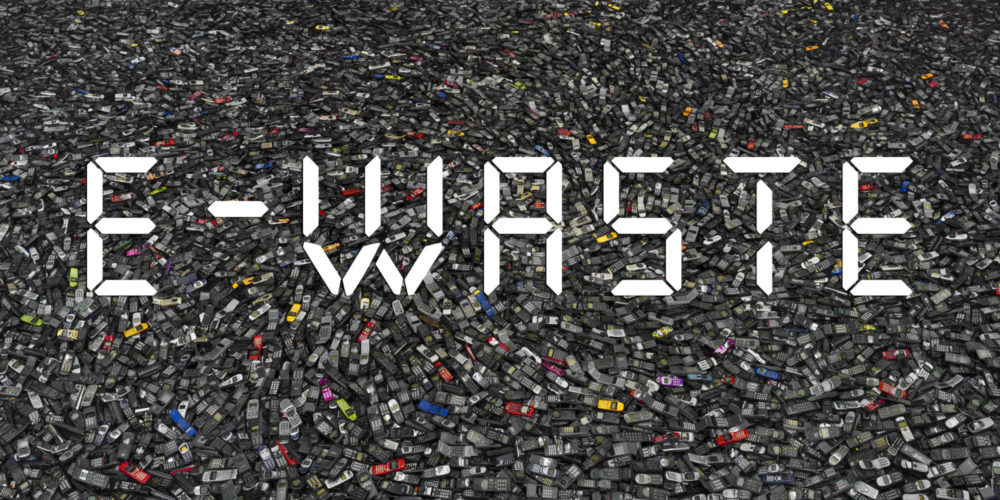Did you know that the recycling e-waste industry is growing? The waste recycling market is growing fast as the need for more advanced technology and vital equipment increases.
The rapid growth and popularity of home electronics, from laptops to smartphones to flat-screen televisions, has turned this field into a global industry, with a fast turn around, worth billions of dollars.
However, technological advances have also created another global phenomenon: the challenge of what to do with all those used laptops, tablets, computers, screen monitors, power tools, circuit boards, and other devices once they break down, become obsolete, or get replaced by improved versions.
It’s become increasingly clear these devices can pose potentially hazardous environmental risks if they’re placed with other household trash in a landfill.
As a result, communities worldwide are looking for innovative ways to handle the massively increased growth in what has been termed e-waste, or electronic waste.
The Rise of the E-waste Industry
The emerging solution has been the rise of a burgeoning e-waste recycling market. It has responded to both the booming popularity of consumer electronics and the growing unpopularity of these products in landfills.
Both trends are certain to continue.
New data has shown that consumers are on track to buy more electronic devices than ever before, and the Consumer Technology Association has reported that most U.S. households have up to 24 electronic products. While there’s been a worldwide explosion in new electronic devices, the life span of many has only gotten shorter and shorter.
As devices become more sophisticated each year, the older versions quickly become obsolete.
According to the United Nations initiative to estimate E-Waste production, the world produced approximately 50 million tons of e-waste back in 2012. That’s an average of 15 pounds per person across the globe! Additionally, the UN also stated that the UK produced 1.3 million tons of electronic waste; China generated 11.1 million tons of e-waste; and the United States accounted for 10 million tons in 2012.
That’s a lot of products that have outlived their usefulness. As the life span of these products gets shorter, the amount of electronic scrap grows larger.
At the same time, a growing number of states have passed laws banning e-waste from going into landfills and incinerators. It’s been estimated that up to 70 percent of the heavy metals in U.S. landfills come from electronics.
The Environmental Risks of E-waste
Although e-waste still goes into landfills in many states, the environmental risks are well known. According to Reuters, e-waste contains toxic and hazardous materials including mercury, lead, cadmium, beryllium, chromium, and chemical flame retardants, which have the potential to leach into our soil and water.
Currently, the volume of e-waste that can be recycled properly is less than 20% of the total volume of e-waste generated worldwide each year. And it’s been estimated that e-waste contains more than 75 percent of the environmentally hazardous waste found in landfills.
A growing number of states are recognizing the benefits of not allowing these used items to go into landfills and increasing the waste streams. Instead, they’re finding ways to recycle them.
There is a lot to recycle. The U.S. Environmental Protection Agency reported in 2014 that e-waste is the most rapidly growing segment of municipal solid waste; it is one of the fastest-growing waste streams in emerging as well as developed regions. In the United States alone, there is more 3 million tons of e-waste ready to be recycled.
In addition to protecting the environment from contaminants, electronic recycling has helped recover precious metals contained within these products.
This is not just an issue in the United States. E-waste recycling has actually been done at a higher rate in Europe than in the United States. A full-fledged e-waste recycling plant recently opened in Karnataka in South India, a country that generates an estimated 2.5 million tons of e-waste per year.
Do Your Part With Great Lakes Electronics
The e-waste recycling industry is becoming increasingly important as the volume of e-waste continues to grow. The staggering growth of consumer electronics has led to an ever-expanding surge of end-of-life electronics that must be recycled. Now, more than ever, finding an e-waste recycler or a recycler program is imperative.
The global E-waste Recycling market was valued at $1.190 million in 2017 and will reach $1.920 million by the end of 2025, according to the “E-waste Recycling Market With detail Analysis of industry Size, Share, Recycling Technologies, Top Key Vendors and 2025 Growth Forecast [Period] Report”.
The market size has also been fueled by growing privacy and security concerns. With so much critical data stored on laptops, smartphones, tablets and other devices, consumers are increasingly reluctant to simply discard them until they can be certain no one will be able to access that information in the future.
That’s a key reason why a proven recycling firm like Great Lakes Electronics Corporation will not only recycle your electronic waste but also eliminate any worries the owner might have about the data that’s still contained on the old hard drive.
Great Lakes Electronics Corporation offers complete destruction of all drives through their in-house shredder that will grind and chop it into small pieces, making it impossible for someone else to recover personal information.
They can even record the shredding of those drives so anyone interested can watch it being destroyed.
Contact Great Lakes Electronics today at 888-392-7831 to learn more.

